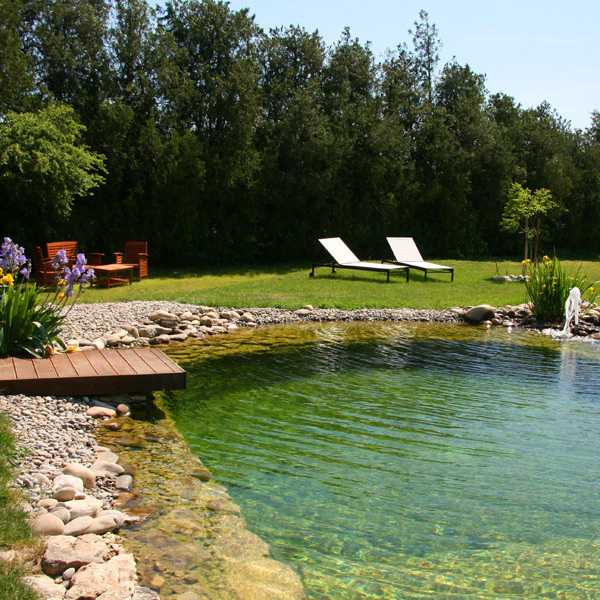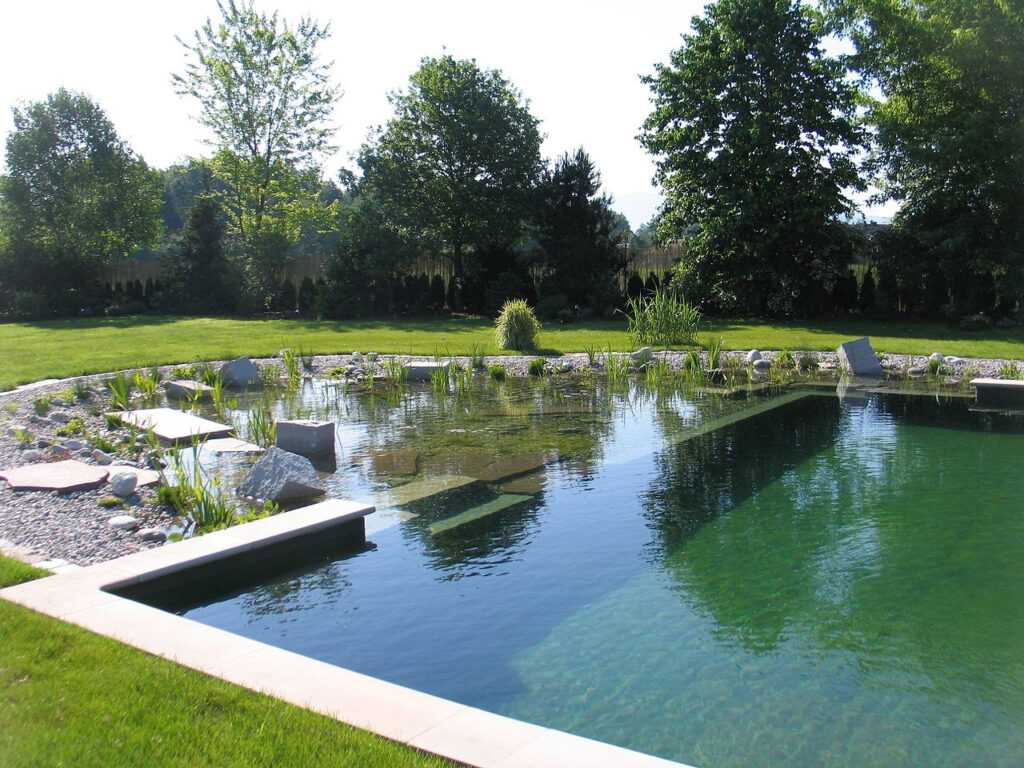Your pool: chlorinated or natural?

While the traditional pool market continues to expand, the biological pool is beginning to make serious inroads. Here is a look at this newcomer. Which, in reality, has been around for a long time.
The concept of the biological swimming pool is not really new. It has been around for more than twenty years in countries that are very concerned about the environment, especially Germany, Austria and Switzerland, which have followed Australia's lead. But for some time now, its growth has been very rapid, particularly in France. In the south of France, for example, a number of high-quality hotel facilities have given up their traditional swimming pools and switched to biological pools. And for good reason, since this type of pool offers many advantages in terms of both the environment and health (chlorinated products can have recognised effects such as allergies, irritations, dry skin, odour, etc.). This does not mean that it is free of all disadvantages, as we shall see. Even if we can consider that, in the long term, the "plus" wins out.
But, before going any further, a few clarifications are needed on the definitions. Because these pools come under several names and actually cover two different concepts.

Two concepts
The first concept is the "natural swimming pool" or "bathing pool". This is more of a landscape concept than a truly biological one, but it does not involve chlorinated chemicals. It is a swimming pool built with natural materials and shaped to fit in with the natural environment of the place, enhanced by lush vegetation. The reason this pool is not biological is that the water is not treated via a filtration tank, but by electrolysis or ultraviolet. This "bathing pool" is not yet widespread.
The second concept, the "biological swimming pool", has the same landscape integration and the absence of chlorinated products, but the purity of the water is ensured by a lagoon system for the filtration of the water, which guarantees both its balance and its purity. The presence of the lagoon can allow for a "flora/fauna" ecosystem to develop. But don't think that you will be swimming in the middle of plants and possibly fish. The biological pool has two, or even three, separate pools.
The first is the bathing pond, which is devoid of any vegetation. Its water is permanently pumped into a lagoon (also called a "regeneration pond") where plant roots and minerals (mainly lava rock, but also pebbles and gravel) ensure physical, bacteriological and biological self-purification. The mineral substances are absorbed by the roots and transformed into oxygen by the principle of photosynthesis; the bacteria and other harmful substances are transformed into mineral salts which feed the plants in the pond. The purified water falls back into the bathing area via a waterfall which further oxygenates the water. Some builders add a purification or decantation basin, which can be located under the lagoon.

The pro...
The advantages of both natural and biological ponds are severalfold. Firstly, they guarantee the health of the bathers because of the absence of any chemical products. Secondly, they are environmentally friendly as there is no discharge of chemically treated water. Maintenance, for its part, is less restrictive - even insignificant - with the cleaning (possible, but in any case not systematic) by robot of the bathing area and the lagoon plants to be trimmed. Furthermore, the choice of an ecological pool allows for perfect integration into the landscape through design and construction procedures that are completely customised to the location and the wishes of the project manager. Not forgetting the obvious pleasure of having a living place in all seasons (the traditional pool must be covered in winter), with the appearance of constantly changing flora and fauna, and all the pleasure of observation that this implies. The sound of the waterfall brings real relaxation. There are no mosquitoes as they only come in stagnant water. Finally, the absence of any chemical products constitutes a clear saving in maintenance.
... and the cons
However, there are disadvantages. Starting with the space required. It is generally considered that a space of 100 m2 is required for this type of pool and that, for the water to be purified effectively, the lagoon must have a surface area equivalent to that of the bathing pool (various estimates are made by installers, some indicating that half is sufficient) in order to achieve biological balance.
The second disadvantage is the evaporation of water, which is much higher due to the two pools and the waterfall. In order to maintain the biological balance, it is imperative to ensure that the water level is maintained. It is estimated that an average of 50 m3 of water is needed per year, but this depends on the individual pool. However, this problem does not arise, or hardly at all, if the house is equipped with a rainwater recovery system. Not forgetting the electricity consumption due to the pump, estimated at 0.6 kw/hour, but there are now solar-powered pumps. This water and electricity consumption is the reason why a biological pool cannot be called ecological.
Finally, the water temperature must never exceed 24°. Above this temperature, there is a risk of algae growth and the appearance of bacteria. This temperature limit also means that, if the weather is good, fresh water must be added.
As for the cost, it is generally higher than that of a traditional pool (although some builders claim to be able to work at the same price), but the difference is amortized by the low maintenance costs. In addition, a large part of the work can be done by self-construction. And there is no doubt that this cost will decrease as the market grows.
What are the property prices at the moment?
Written by
atHome
Posted on
06 July 2017
